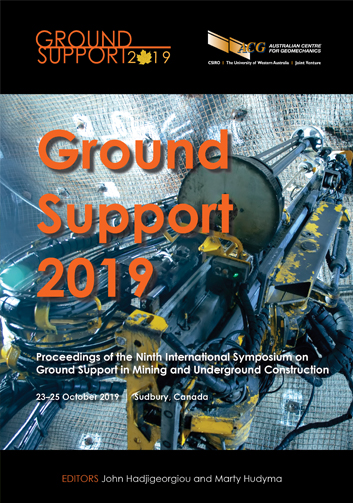Response of a support system to seismic events: case study of Mina Uchucchacua, Peru

|
Authors: Gonzalez, CV; Beltran, R; Henning, J |
DOI https://doi.org/10.36487/ACG_rep/1925_07_Gonzalez
Cite As:
Gonzalez, CV, Beltran, R & Henning, J 2019, 'Response of a support system to seismic events: case study of Mina Uchucchacua, Peru', in J Hadjigeorgiou & M Hudyma (eds), Ground Support 2019: Proceedings of the Ninth International Symposium on Ground Support in Mining and Underground Construction, Australian Centre for Geomechanics, Perth, pp. 125-138, https://doi.org/10.36487/ACG_rep/1925_07_Gonzalez
Abstract:
The Geomechanics Research Centre (GRC) of MIRARCO at Laurentian University, was contracted by the Chief of Geomechanics at Buenaventura’s Uchucchacua Mine to assist in the development of a Seismic Hazard and Geomechanics Risk Assessment Study. This paper defines guidelines and appropriate practices in accordance to MIRARCO expertise as reflected in the Canadian Rockburst Support Handbook (Kaiser et al. 1996) that has assisted the mine in reducing mining-induced hazards, which may also improve the mining performance. The objective of this research was focused on a review of the current state of many mine aspects such as geology, rock mass characteristics, rock support systems, seismic data systems and data collection; all of them directly related with the rock mass behaviour and geomechanics hazards, in order to provide key good practices to add, implement or develop better control of the operation and prevention or mitigation of those hazards. The mine is composed of three production zones: Socorro, Carmen and Huantajalla. The Socorro zone was the focus for this study. This paper provides a description of study topics that Uchucchacua Mine was advised to consider in order to address hazard awareness over the long-term. This includes integration of stress/microseismic/structural information and tactical ground support design.
Keywords: geomechanics hazard, underground risk assessment, seismicity, dynamic rock support
© Copyright 2025, Australian Centre for Geomechanics (ACG), The University of Western Australia. All rights reserved.
View copyright/legal information
Please direct any queries or error reports to repository-acg@uwa.edu.au
View copyright/legal information
Please direct any queries or error reports to repository-acg@uwa.edu.au